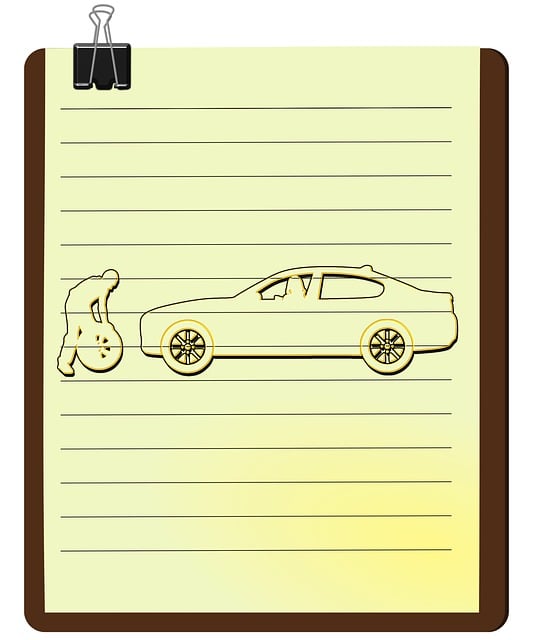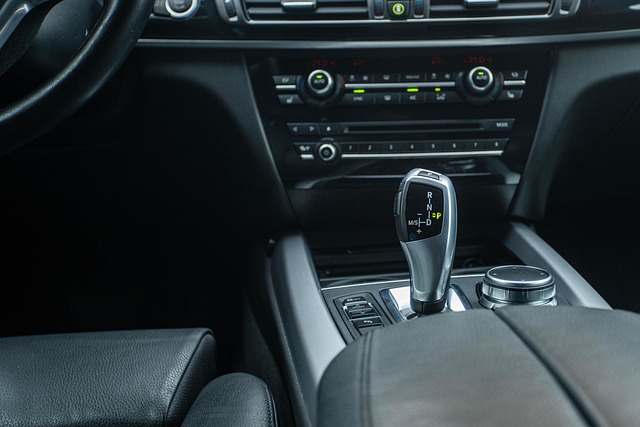To lower your auto insurance premium, understand that key factors include driving history (keeping it clean), vehicle details (choosing safer, newer cars or liability-only for older ones), location, and coverage type. Regularly compare quotes from multiple insurers using online tools, bundle policies for multiple vehicles, and take advantage of available discounts. Strategically adjust your deductible to lower premiums while balancing financial comfort, practice safe driving habits, maintain a clean record, and annually review rates for the best value.
Looking to lower your auto insurance premium? Understanding how your policy pricing is determined is key. In this article, we break down the factors influencing your auto insurance costs, offering practical strategies for every driver. From evaluating your driving habits and vehicle specifics to leveraging discounts and bundling policies, discover effective solutions to save on your next insurance quote. Learn how to make informed choices and keep more money in your pocket while staying protected on the road.
Understanding Your Auto Insurance Premium: Factors at Play

Understanding your auto insurance premium is a key step in learning how to lower your auto insurance premium. Several factors influence the cost of your coverage, and being aware of these can empower you to make informed decisions. Key considerations include your driving history—accidents or violations can significantly impact rates—as well as your vehicle’s make and model, age, and safety features. Where you live also plays a role, as regional risks and claims histories affect premiums. Additionally, the level of coverage you choose—liability only versus comprehensive and collision—has a direct effect on cost.
Comparing quotes from multiple insurers is another effective way to lower your auto insurance premium. Different companies weigh factors differently, so shopping around allows you to find a provider that aligns with your profile while offering competitive rates. Regularly reviewing your policy and claims history is also advisable, as changes in either can lead to savings. Safe driving habits and maintaining a clean record can go a long way in reducing your auto insurance premium over time.
Evaluating Your Driving Habits and History

Evaluating your driving habits and history is a powerful way to lower your auto insurance premium. Insurers consider factors like claim frequency, traffic violations, and accident record when calculating rates. If you have a clean driving record with no tickets or accidents, you’re likely to pay less for coverage. Regularly reviewing your driving behavior can help maintain this positive history, ultimately saving you money in the long run.
Adopting safe driving practices is not only beneficial for your wallet but also ensures your safety and that of others on the road. Simple changes like maintaining a consistent speed limit, avoiding distractions while driving, and adhering to traffic rules can significantly impact your insurance costs. By understanding how these habits influence your premium, you can make informed decisions to save on auto insurance.
The Impact of Your Vehicle: Make, Model, and Age

Your vehicle’s make, model, and age significantly influence your auto insurance premium. Newer cars often come with advanced safety features that insurers perceive as reducing the risk of accidents and subsequent claims. Consequently, they typically command lower rates than older models. Moreover, certain makes and models are statistically associated with higher or lower accident risks, which can affect pricing.
When looking to lower your auto insurance premium, consider these factors. If possible, opt for a vehicle that’s known for its safety features and has a good track record in terms of accidents. Additionally, if you own an older car, you might save money by insuring it with a policy that covers only liability—a move that can help reduce your coverage costs.
Insuring Multiple Vehicles? Bundling Could Save You

If you own more than one vehicle, bundling your insurance policies could be a smart move to lower your auto insurance premium. Many insurance companies offer significant discounts when you insure multiple cars on a single policy. This is because they perceive bundled policies as less risky—a notion that makes financial sense given the potential for shared risks and responsible driving behavior across vehicles.
By combining your policies, you simplify your coverage needs and potentially reduce overall costs. It’s a win-win situation where you get better rates and easier management of your insurance requirements, especially if all your vehicles are driven by the same primary driver with a clean record.
Shop Around: Comparing Quotes for the Best Rates

To lower your auto insurance premium, shopping around and comparing quotes is a must. Don’t settle for the first quote you receive; take the time to research different providers and policies. Websites like Compare.com or Insuransy.com allow you to easily input your information and get multiple offers in minutes. This comparison shopping not only saves you time but also helps ensure you’re getting the best rate for your needs.
When comparing quotes, consider factors beyond just price. Look into things like coverage options, deductibles, and customer service reviews. Understanding what each policy includes can help you make an informed decision. By taking a strategic approach to shopping around, you’ll be well on your way to finding affordable auto insurance that meets your requirements without breaking the bank.
Utilize Discounts and Promotions: Saving Tips

To lower your auto insurance premium, one effective strategy is to take advantage of available discounts and promotions. Many insurance providers offer a range of savings opportunities, from safe driving incentives to bundle discounts. Look into potential savings by practicing defensive driving courses or maintaining a clean driving record free of accidents or violations. Additionally, consider combining multiple policies with the same company, such as home and auto insurance, to qualify for bundle discounts that can significantly reduce your overall costs.
Beyond individual behaviors, understanding your vehicle and its features can unlock extra savings. Insurers often provide discounts for cars equipped with advanced safety systems like anti-lock brakes, air bags, or collision avoidance technology. Similarly, if you drive an electric or hybrid vehicle, certain insurers may offer special promotions to encourage the adoption of eco-friendly transportation options. Regularly reviewing and comparing your policy options can help ensure you’re receiving the best rates possible for your driving habits and vehicle characteristics.
Consider High Deductibles: A Trade-Off for Lower Premiums

When looking for ways to lower your auto insurance premium, one strategy to consider is increasing your deductible. While this might seem counterintuitive, it’s a common trade-off that can significantly reduce monthly costs. A higher deductible means you’ll pay more out of pocket in case of an accident or claim. However, if you’re cautious and drive safely, this trade-off can be beneficial.
By accepting a higher deductible, insurance companies perceive you as less risky, leading to lower premiums. This is because smaller claims occur less frequently, resulting in fewer payouts for the insurer. Just remember, it’s crucial to balance your financial comfort with the potential out-of-pocket costs. Evaluate your driving habits and history to ensure this approach aligns with your risk profile.
Building a Solid Driving Record: Long-Term Savings Strategies

Building a solid driving record is one of the most effective ways to lower your auto insurance premium in the long run. This involves practicing safe and responsible driving habits, such as adhering to speed limits, avoiding unnecessary lane changes, and maintaining a safe following distance from other vehicles. By reducing the risk associated with your driving behavior, insurance companies can offer you lower rates. Regularly reviewing your driving record and addressing any violations or at-fault accidents is crucial in achieving this goal.
To maximize long-term savings on auto insurance, consider adopting additional strategies that demonstrate financial responsibility. This includes maintaining a clean driving record by avoiding traffic tickets and accidents, paying bills on time, keeping your vehicle well-maintained, and insuring against theft or damage. Additionally, comparing rates from different insurers annually can help you take advantage of market changes and ensure you’re still getting the best value for your insurance dollar.
